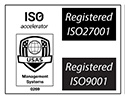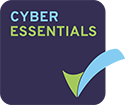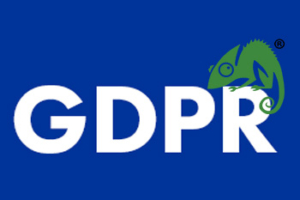Absolute Link
This link shows the full URL of the page being linked to.
Accessibility
Used to describe, in general terms, the degree to which a system is of use to as many people as possible.
AdWords
The advertisement and link auction network provided by Google. Keyword targeted, sold on a cost-per-click basis in an auction, which takes into account the ad click through rate and the maximum bid, it works on most of Google’s ads.
AJAX
Asynchronous JavaScript and XML – helps websites appear quicker and more responsive. The technique allows a web page to request additional data from a server without requiring a new page to load.
Alt Attribute
Visually impaired people and most major search engines are not able to easily distinguish what is in an image. Often referred to as ‘alt tags’, the image alt attribute allows you to help screen readers and search engines understand the function of an image by providing a text equivalent for the object.
Analytics
User paths, page views and conversion statistics can be tracked using this software.
Broken Link
A non-functioning hyperlink, or a link which does not lead to the desired location.
Browser
Application used to view the world wide web, the most commonly used being Internet Explorer; Firefox; Safari; and Opera.
Cache
Copy of a web page stored by either a search engine or browser.
CGI
Common Gateway Interface (cgi). The interface software between a web server and other machines. Can also be used to describe software running on that server. Many ‘cgi’ programs are used to add interactivity to a web site.
CMS
Content Management System – an application that makes it easy to update and add information to a website, allowing anyone (even those who do not have coding or website building experience) to edit their website, usually just using their browser.
Cookie
Cookies are small data files written to your computer which are used to help websites customise your user experience.
CPC – Cost Per Click.
Many search ads, and contextually targeted ads, are sold in auctions where the advertiser is charged a certain ‘price per click’. For instance, Google AdWords’ pay per click ad program, allows you to buy search and contextual ads.
Crawl
Search engines such as Google have a Bot (see also ‘GoogleBot’) which ‘crawls’ web pages, following links and recording content, maintaining a searchable database of the internet.
Crawl Depth
How deeply a website is ‘crawled’ and indexed.
Crawl Frequency
How often a website is crawled.
CSS
Cascading Style Sheets. A method for adding styles to a web page, controlling how a web page looks visually. Using a style sheet instead of inline formatting greatly speeds up the website and helps to make it more accessible and search engine friendly.
Database
A collection of information stored in a computer in a systematic way. Often used on websites to support, amongst other things, photo galleries, inventory listings, catalogues, and message forums.
Dedicated Server
Limited to serving one website, or small collection of websites, this server is owned by a single person.
Description Metatag
In search engine results a short description near each listing is used to give the user more information about a website. (See also: ‘SEO – Search Engine Optimisation’.)
DNS
Domain Name Server or Domain Name System. An Internet service which translates domain names into IP addresses, which makes them easier to remember as domain names are alphabetic. However, the Internet is really based on IP addresses. Every time you use a domain name, therefore, a DNS service must translate the name into the corresponding IP address. So, the domain name www.forinstance.com might translate to 192.135.852.2.
Domain Names
Used in URLs to identify particular web pages. This is our domain name for example: www.chameleonwebservices.co.uk. If you are interested in getting a domain name, please contact us.
Dynamic Content
Content which changes over time or uses a dynamic language such as PHP to help render the page.
Dynamic Languages
Programming languages such as PHP and ASP which build web pages on the fly upon request.
eCommerce
Known commonly as ‘e-commerce’ or ‘eCommerce’, it consists of the buying and selling of products or services over electronic systems such as the Internet and other computer networks.
Entry Page
The page via which a user enters your website.
External Link
A link which references another domain/website.
Favicon
A small ‘Favourites Icon’ which appears next to URLs in a web browser.
Firefox
A popular standards-based, free download, web browser.
Flash
Vector, graphics-based, animation software. Makes it easier to make websites look rich and interactive. Websites which contain ‘Flash’ content are difficult for search engines to index and rank because they contain relatively small content.
FTP
File Transfer Protocol. This protocol is for transferring data between computers, so many content management systems include a FTP capability.
The world’s leading search engine.
Google Analytics
Offered by Google, this service records information about visitors to your website and illustrate how well your website is performing. We use this service to provide comprehensive reports on your website.
GoogleBot
Google’s search engine spider. This spider program automatically fetches web pages – Spiders are used to send pages to search engines.
Google Maps
Detailed maps which you can add your business to, and integrate into your website, thus allowing clients to access directions to your business.
Hidden Text
SEO techniques used to show search engine spiders text that human visitors do not see. While some sites may get away with it for a while, generally the risk to reward ratio is inadequate for most legitimate sites to consider using hidden text.
Home Page
The main page on your website. Largely responsible for helping develop your brand and setting up the navigational schemes that will be used to help users and search engines navigate your website.
Hosting
The process of storing your website pages on a computer (a web server) and making them available, by means of the Internet, to the world.
.htaccess
Apache directory-level configuration file which can be used to password protect or redirect files. We have a how to here!
HTML
HyperText Markup Language. The language in which pages on the World Wide Web are created.
HTTP
HyperText Transfer Protocol. The means by which data is transferred from its residing location on a server to an active browser.
Inbound Link
This link points from one website to another. By using the ‘link:’ function, most search engines allow you to see sample links pointing to a document.
Internal Link
An internal link from one page on a site to another page on the same site. It is preferential to use descriptive internal linking to make it easy for search engines to understand what your website is about. Internet – The worldwide web – a network of computers connected via TCP/IP.
Internet Explorer
Microsoft’s web browser.
IP Address
Internet Protocol Address. Each and every computer connected to the Internet has an IP address.
ISP
Internet Service Provider. Companies which provide access to the Internet.
JavaScript
Client-side scripting language that can be embedded into HTML documents to add dynamic features. If not done correctly however, using Javascript for navigation and content can damage your visibility in search engines. In AJAX, JavaScript has been combined with other technologies to make web pages even more interactive.
Keyword
A word or phrase which people use to search the Internet.
Keyword Density
In search engine optimisation (see also: SEO), keyword density is the measurement in percentage of the number of times a particular keyword or phrase appears, compared to the total number of words in a page.
Link
A reference from one web document to another web document or another position in the same document. A link is seen as a vote of trust by most popular search engines.
Link Building
The process of building high quality links with other websites. Link campaigns are a major piece of the jigsaw when it comes to getting your website listed successfully with search engines.
Link Popularity
The number of links pointing at a website. Simply put, ‘link popularity’ is the total number of links your website has coming from other websites. The more links your website has, the higher your link popularity, so as a consequence your website will be looked upon more favourably by all major search engines. The sites must have complimentary and related content to your own website – links from relevant sites are considered to be “more relevant” by search engines and will help to improve your rankings.
Linux
The operating system based on Unix (another operating system), used to run Web servers.
Meta Description
The meta description tag – a sentence or two of text which describes the content of the page, sometimes used to describe the page in a ‘Search Engine Results Page’ – can be very important.
Meta Keywords
The meta keywords tag – a tag which can be used to highlight keywords and keyword phrases which are relevant to the specific web page. Trust issues can result in most search engines ignoring keywords, just taking content from the website for ranking.
Meta Tags
People generally refer to Meta Descriptions and Meta Keywords as meta tags. Some people also group the page title in with these.
MySQL
A database that uses a language called SQL (Structured Query Language) for adding, accessing, and processing data in a database. ‘MySQL’ typically runs on Linux/Unix servers in conjunction with PHP. MySQL, and is noted for its speed, reliability, and flexibility.
Navigation
Often appearing on the left, or top of a page, this set of links is designed to help website users move from page to page around a website.
Opera
Fast, standards based, web browser – Opera is popular now for its mobile web browser and browser on the Nintendo DS and Wii.
Outbound Link
A link from one website pointing at another external website. Linking out to useful relevant related documents is an easy way to help search engines understand what your website is about.
PageRank
PageRank – a numeric value that represents how important a page is on the web. PageRank is Google’s way of deciding a page’s importance. It matters because it is one of the factors that determines a page’s ranking in the search results. This is not the only factor Google uses to rank pages, but it is an important one. Google figures that when one page links to another page, it is effectively casting a vote for the other page. The more votes that are cast for a page, the more important the page must be.
PHP
PHP Hypertext Preprocessor – an open source server side scripting language used to render web pages or add interactivity to them.
Portable Document Format. A universal file format developed by Adobe Systems allowing files to be stored and viewed in the original printer-friendly context. The Max Design & Print Co. uses PDFs in many stages of its workflow, from design proofs to print production.
PPC
Pay Per Click ads only charge advertisers if a potential customer clicks on an ad. An example of which would be Google AdSense.
Quality Link
Search engines count links as a vote of trust. Quality links count more than low quality links.
Reciprocal Links
A reciprocal link goes in both directions between two websites.
Redirect
A method of alerting browsers and search engines that a page location has moved. Users will not notice they are being redirected if done correctly and search engines only index the resulting page.
Registrar
A company which allows you to register domain names.
Referrer
The source from which a website visitor came from.
Robots.txt
A file which sits in the root of a site and tells search engines which files not to crawl. Some search engines will still list your URLs as URL only listings even if you block them using a robots.txt file.
RSS
Rich Site Summary or Real Simple Syndication. A method of syndicating information to a feed reader or other software, allowing people to subscribe to a channel they are interested in.
Safari
A popular standards-based web browser made by Apple, included on all Macs, iPhones and iPod Touch. (Now available for PCs also.)
Search Engine
A tool or device used to find relevant information. Google and Yahoo are the most commonly used search engines.
Secure server
A Web server that is capable of establishing encrypted communications to protect sensitive information being transmitted over the Internet.
SEO
Search Engine Optimisation. The art and science of publishing information and marketing it in a manner that helps search engines understand that your information is applicable to relevant search queries. SEO consists largely of keyword research, SEO copy writing, and link building.
Server
A computer used to store/host files and serve them to the web.
Site Map
A page which can be used to help give search engines a secondary route to navigate through your site.
SMTP
Simple Mail Transfer Protocol. A protocol used to transfer email between servers, normally associated with sending mail.
Spam
Unsolicited and sometimes malicious email messages.
Spider
A program that automatically fetches Web pages. Spiders are used to send pages to search engines.
Spyware
Software programs which spy on web users. This is often used to collect consumer research and behaviourally target ads.
Static Content
Content which does not change very often.
Submission
Adding your Web site URL and details to search engines.
Title
The title element is used to describe the contents of a document, making it one of the most important aspects to doing SEO on a web page. Such page titles appear in search results.
Tracking
Provides detailed and accurate counting and behaviour information about the visitors to your website.
Traffic
The amount of visitors and visits received by a website.
Uptimes
The time during which a computer (such as a Web server) is functioning without failure.
URI
Uniform Resource Identifier – the unique address of any web document.
URL
Uniform Resource Locator – a variation on URI.
W3C
The World Wide Web Consortium (W3C) is the main international standards organisation for the World Wide Web (abbreviated WWW or W3). It is arranged as a consortium where member organisations maintain full-time staff for the purpose of working together in the development of standards for the World Wide Web. As of February 2008, the W3C had 434 members. The W3C DOM, on the other hand, is about document structure and the changing of document structure, allowing you to add or remove XHTML tags, or even entirely rewrite the page, if you so wish.
Whois
Each domain has an owner on record. Ownership data is stored in the Whois record for that domain. Some domain registrars also allow you to hide the ownership data of your sites.
Wiki
A Wiki lets users create, edit and modify entire pages. Sounds like a recipe for disaster, but sites like Wikipedia.org prove that it is a powerful tool for generating large bodies of work quickly, with the added benefit of peer review to consistently improve it.
XHTML
Extensible HyperText Markup Language is a class of specifications designed to move HTML to conform to XML formatting.
XML
Extensible Markup Language – a simple, very flexible, text format derived from SGML. Used to make it easy to syndicate or format information using technologies such as RSS.
Yahoo!
A popular search engine.
Zip
A process of compressing a file or number of files into one compact archive. ZIP files take up less storage, making it ideal for archiving and backup, as well as more efficient and quicker for a user to email or download.








